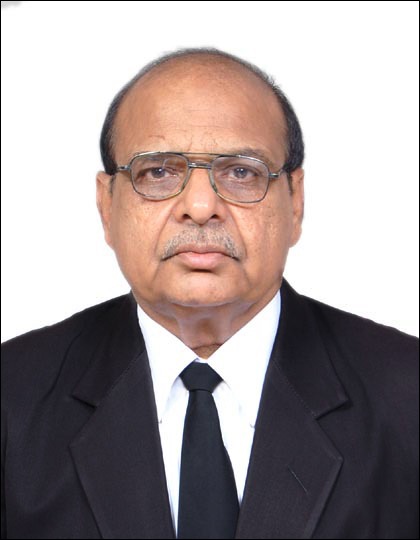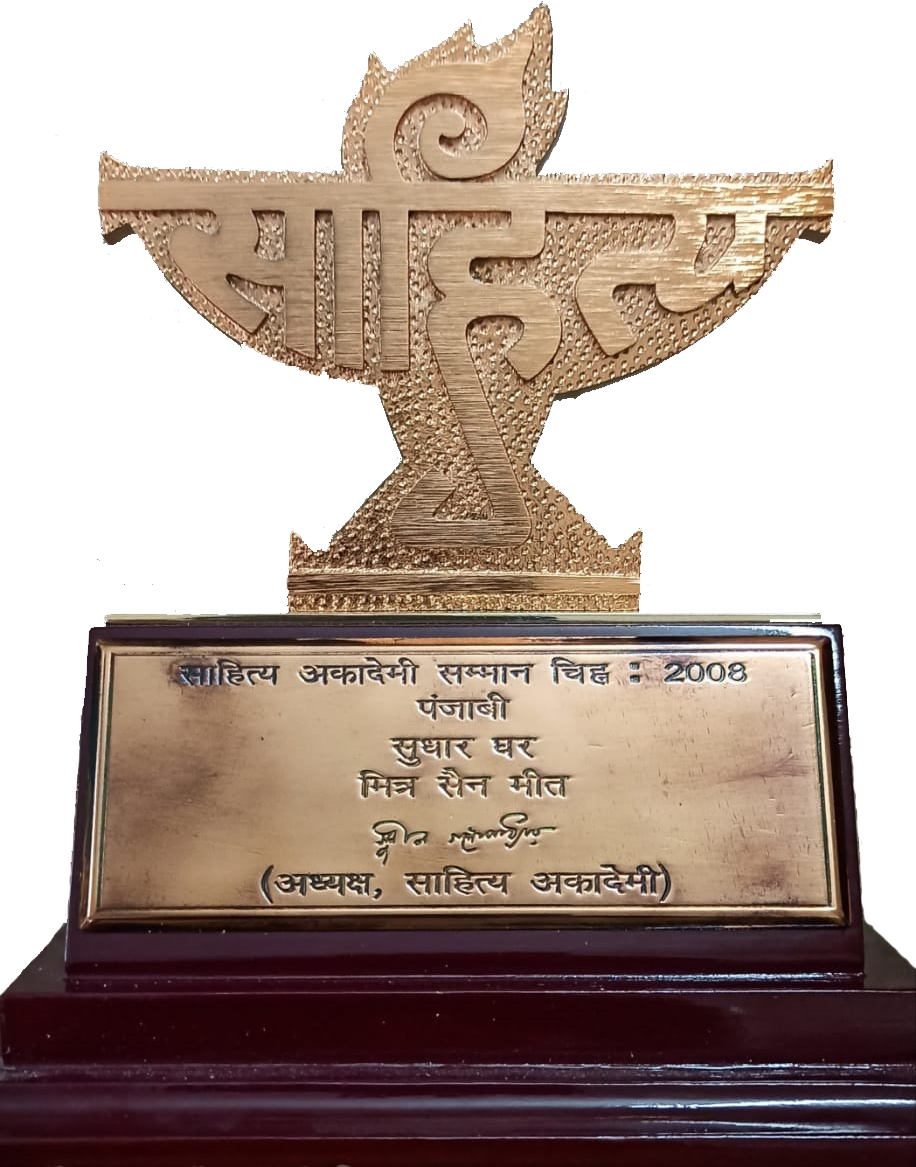ਪੰਜ ਅਤਿ ਮਹੱਤਵਪੂਰਨ ਫੈਸਲੇ(Five Important cases)
ਭਾਰਤ ਦੀਆਂ ਫ਼ੌਜਦਾਰੀ ਅਦਾਲਤਾਂ ਵੱਲੋਂ ‘ਸ਼ੱਕ ਦਾ ਲਾਭ’ ਦੇਣ ਵਾਲੇ ਸਿਧਾਂਤ ਦੀ ਲੋੜ ਤੋਂ ਵੱਧ ਵਰਤੋਂ ਕੀਤੀ ਜਾਂਦੀ ਹੈ। ਨਤੀਜੇ ਵਜੋਂ ਸੰਗੀਨ ਜ਼ੁਰਮ ਕਰਨ ਵਾਲੇ ਦੋਸ਼ੀਆਂ ਦੇ ਬਰੀ ਹੋਣ ਦੀ ਦਰ ਦਿਨੋ-ਦਿਨ ਵੱਧ ਰਹੀ ਹੈ। ਇਸ ਨਿਯਮ ਦੀ ਬੇਲਗਾਮ ਵਰਤੋਂ ਤੋਂ ਗੁਰੇਜ਼ ਕਰਨ ਦੀ ਸਲਾਹ ਇਹਨਾਂ ਵਿੱਚੋਂ ਇੱਕ ਫੈਸਲਾ ਦਿੰਦਾ ਹੈ। ਫ਼ੌਜਦਾਰੀ ਕਾਨੂੰਨ ਦਾ ਇੱਕ ਨਿਯਮ ਕਹਿੰਦਾ ਹੈ ਕਿ ਲੜਾਈ ਦੌਰਾਨ ਮ੍ਰਿਤਕ ਦੇ ਜੇ ਇੱਕ ਤੋਂ ਵੱਧ ਦੋਸ਼ੀਆਂ ਨੇ ਸੱਟਾਂ ਮਾਰੀਆਂ ਹੋਣ ਅਤੇ ਮ੍ਰਿਤਕ ਦੀ ਮੌਤ ਕਿਸੇ ਇੱਕ ਵਿਸ਼ੇਸ਼ ਸੱਟ ਦੀ ਥਾਂ ਸਾਰੀਆਂ ਸੱਟਾਂ ਦੇ ਸਾਂਝੇ ਪ੍ਰਭਾਵ ਕਾਰਨ ਹੋਈ ਹੋਵੇ ਤਾਂ ਕਿਸੇ ਵੀ ਦੋਸ਼ੀ ਨੂੰ ਕਤਲ ਦੇ ਜ਼ੁਰਮ ਦੀ ਸਜ਼ਾ ਨਹੀਂ ਦਿੱਤੀ ਜਾ ਸਕਦੀ। ਇੱਕ ਹੋਰ ਨਿਯਮ ਕਹਿੰਦਾ ਹੈ ਕਿ ਜ਼ੁਰਮ ਲਈ ‘ਸ਼ਹਿ ਦੇਣ ਵਾਲੇ’ ਦੋਸ਼ੀ ਨੂੰ ‘ਜ਼ੁਰਮ ਕਰਨ ਵਾਲੇ ਦੋਸ਼ੀ’ ਨਾਲੋਂ ਵੱਧ ਸਜ਼ਾ ਨਹੀਂ ਦਿੱਤੀ ਜਾ ਸਕਦੀ। ਇੱਕ ਹੋਰ ਨਿਯਮ ਇੱਥੋਂ ਤੱਕ ਕਹਿੰਦਾ ਹੈ ਕਿ ਜੇ ਸਜ਼ਾ ਸੁਣਾਉਣ ਸਮੇਂ ਕੁਝ ਦੋਸ਼ੀਆਂ ਨਾਲ ਨਰਮੀ ਵਰਤੀ ਗਈ ਹੋਵੇ ਤਾਂ ਬਰਾਬਰਤਾ ਦੇ ਅਧਾਰ ਤੇ ਬਾਕੀ ਦੋਸ਼ੀ ਵੀ ਉਸੇ ਤਰ੍ਹਾਂ ਦੀ ਨਰਮੀ ਦੇ ਹੱਕਦਾਰ ਹਨ। ਇਹਨਾਂ ਨਿਯਮਾਂ ਨੂੰ ਉਲੱਦਦੇ ਹੋਏ, ਪੀੜਤ ਧਿਰ ਦੇ ਹੱਕਾਂ ਦੀ ਰਾਖੀ ਕਰਦੇ ਕੁਝ ਨਿਯਮ ਘੜੇ ਗਏ ਹਨ। ਉਹ ਮਹੱਤਵਪੂਰਨ ਫੈਸਲੇ ਇਹ ਹਨ।
ਫੈਸਲਾ ਨੰ:1:
Brij Bhukhan and others v/s The State of Uttar Pradesh, 1957 Cri.L.J. 591 (SC – FB)
- ਜੇ ਮ੍ਰਿਤਕ ਦੇ ਬਹੁਤ ਸਾਰੀਆਂ ਸੱਟਾਂ ਲੱਗੀਆਂ ਹੋਣ ਪਰ ਉਹਨਾਂ ਵਿੱਚੋਂ ਇੱਕ ਵੀ ਸੱਟ ਅਜਿਹੀ ਨਾ ਹੋਵੇ ਜੋ ਕਿ ਸਧਾਰਨ ਤੌਰ ਤੇ (sufficient to cause death in the ordinary course of nature) ਮ੍ਰਿਤਕ ਦੀ ਮੌਤ ਦਾ ਕਾਰਨ ਬਣੀ ਹੋਵੇ, ਪਰ ਉਹ ਸਾਰੀਆਂ ਸੱਟਾਂ ਮਿਲ ਕੇ (cummulatively) ਦੋਸ਼ੀ ਦੀ ਮੌਤ ਦਾ ਕਾਰਨ ਬਣੀਆਂ ਹੋਣ ਤਾਂ ਸੱਟਾਂ ਮਾਰਨ ਵਾਲੇ ਸਾਰੇ ਦੋਸ਼ੀਆਂ ਨੂੰ ਕਤਲ ਦੇ ਜ਼ੁਰਮ ਦੀ ਸਜ਼ਾ ਹੋ ਸਕਦੀ ਹੈ।
Para “6. ….. If the numerous injuries found on the body of Ram Prasad had been inflicted in the manner deposed to by the prosecution witnesses, there can be little doubt that the assailants intended to cause his death. Furthermore, even if none of the injuries by themselves was sufficient in the ordinary course of nature to cause Ram Prasad’s death, cumulatively they were certainly sufficient in the ordinary course of nature to cause his death, which in fact took place soon after the assault. In our opinion, if the prosecution evidence in this respect is accepted, the offence was clearly one of murder….”
2. ਜ਼ੁਰਮ ਕਰਨ ਲਈ ਸ਼ਹਿ ਦੇਣ ਵਾਲੇ (instigated) ਦੋਸ਼ੀ ਨੂੰ ਜ਼ੁਰਮ ਕਰਨ ਵਾਲੇ ਦੋਸ਼ੀ ਨਾਲੋਂ ਵੀ ਕਠੋਰ (severe) ਸਜ਼ਾ ਦਿੱਤੀ ਜਾ ਸਕਦੀ ਹੈ।
Para “8. ….. We are, however, of the opinion that if the assault took place in the manner and in the circumstances alleged by the prosecution then the appellant Brij Bhukhan was responsible for the killing of Ram Prasad and that without his instigation Ram Prasad would not have been so severely assaulted as to die. Merely because leniency had been shown to the other appellants in the matter of sentence is no ground for reducing sentence passed on Brij Bhukhan. The prosecution evidence proves that the assault was a brutal and a premeditated one arising out of deep rooted enmity which Brij Bhukhan had towards Ram Prasad and his family. …”
3. ਕੁਝ ਦੋਸ਼ੀਆਂ ਨੂੰ ਸਜ਼ਾ ਦੇਣ ਵਿੱਚ ਵਰਤੀ ਗਈ ਨਰਮੀ (leniency) ਕਾਰਨ ਦੂਜੇ ਦੋਸ਼ੀ ਵੀ ਨਰਮ ਸਜ਼ਾ ਦੇ ਹੱਕਦਾਰ ਨਹੀਂ ਬਣ ਜਾਂਦੇ।
Para “8. ….. Merely because leniency had been shown to the other appellants in the matter of sentence is no ground for reducing sentence passed on Brij Bhukhan…..”
ਫੈਸਲਾ ਨੰ:2
Kalua v/s State of Uttar Pradesh 1958 Cri.L.J. 300 (SC – FB)
- ਹਾਲਾਤ ਤੇ ਅਧਾਰਿਤ ਗਵਾਹੀ ਵਾਲੇ ਮੁਕੱਦਮੇ ਵਿੱਚ ਅਸਲੇ ਦੇ ਮਾਹਿਰ ਦੀ ਰਾਏ, ਸਜ਼ਾ ਦਾ ਅਧਾਰ ਬਣ ਸਕਦੀ ਹੈ।
Para “8. ….. It seems to us that the fire-arms expert made the necessary tests and was careful in what he did. There is no good reason for distrusting his opinion. The learned Judges of the High Court examined the microphotographs in question and were satisfied that there was no ground for distrusting the evidence of the expert. They were accordingly justified in coming to the conclusion that the cartridge Ex. I, found near the cot of Daya Ram, was fired from the pistol Ex. III produced by the appellant from his house. There can, therefore, be no room for thinking, in the circumstances established in this case, that anyone else other than the appellant might have shot Daya Ram. He was, therefore, rightly convicted for the offence of murder.”
ਫੈਸਲਾ ਨੰ:3
Khujji @ Surendra Tiwari v/s State of Madhya Pradesh, 1991 Cri.L.J. 2653 (SC – FB)
- ਅਪੀਲ ਸੁਣ ਰਹੀ ਅਦਾਲਤ ਨੂੰ ਗਵਾਹੀ ਨੂੰ ਮੁੜ ਘੋਖਣ ਦਾ ਅਧਿਕਾਰ ਹੈ। ਗਵਾਹੀ ਦੀ ਮੁੜ ਘੋਖ ਕਰਨ ਬਾਅਦ ਜੇ ਅਦਾਲਤ ਇਸ ਸਿੱਟੇ ਤੇ ਪੁੱਜੇ ਕਿ ਅਪੀਲ ਕਰਨ ਵਾਲੇ ਦੋਸ਼ੀ ਅਤੇ ਹੇਠਲੀ ਅਦਾਲਤ ਵੱਲੋਂ ਬਰੀ ਕੀਤੇ ਗਏ ਦੋਸ਼ੀਆਂ ਵੱਲੋਂ ਕੋਈ ਜ਼ੁਰਮ ਕੀਤਾ ਗਿਆ ਹੈ ਤਾਂ ਅਦਾਲਤ ਅਪੀਲ ਕਰਨ ਵਾਲੇ ਦੋਸ਼ੀ ਨੂੰ ਵੀ ਮੂਲ ਜ਼ੁਰਮ ਵਿੱਚ ਸਜ਼ਾ ਕਰ ਸਕਦੀ ਹੈ ਭਾਵੇਂ ਕਿ ਉਸਨੇ ਸਿੱਧੇ ਤੌਰ ਤੇ ਮੂਲ ਜ਼ੁਰਮ ਕਰਨ ਵਿੱਚ ਹਿੱਸਾ ਨਾ ਲਿਆ ਹੋਵੇ।
Para “12. ….. This Court, therefore, held that when several persons are alleged to have committed an offence in furtherance of their common intention and all except one are acquitted, it is open to the Appellate Court under sub-section (1)(b) of section 386 of the Code to find out on a reappraisal of the evidence who were the persons involved in the commission of the crime and although it could not interfere with the order of acquittal in the absence of a State appeal it was entitled to determine the actual offence committed by the convicted person. Where on the reappreciation of the evidence the Appellate Court comes to the conclusion that the appellant and the acquitted accused were both involved in the commission of the crime, the Appellate Court can record a conviction with the aid of section 34 notwithstanding the acquittal of the co-accused. …..”
6. ਜੇ ਅਪੀਲ ਕਰਨ ਵਾਲੇ ਇੱਕੋ ਇੱਕ ਦੋਸ਼ੀ ਦੇ ਬਾਕੀ ਸਾਥੀ ਦੋਸ਼ੀਆਂ ਨੂੰ ਹੇਠਲੀ ਅਦਾਲਤ ਵੱਲੋਂ ਬਰੀ ਕਰ ਦਿੱਤਾ ਗਿਆ ਹੋਵੇ, ਤਾਂ ਜ਼ੁਰਮ ਸਿੱਧ ਹੋਣ ਤੇ ਅਪੀਲ ਕਰਨ ਵਾਲੇ ਦੋਸ਼ੀ ਨੂੰ ਧਾਰਾ 34/149 ਆਈ.ਪੀ.ਸੀ. ਅਧੀਨ ਮੂਲ ਜ਼ੁਰਮ ਲਈ ਸਜ਼ਾ ਕੀਤੀ ਜਾ ਸਕਦੀ ਹੈ।
Para “12. ….. While the Appellate Court cannot reverse the order of acquittal in the absence of a State appeal, it cannot at the same time be hedged by the appreciation of the evidence by the lower court if that appreciation of evidence is found to be erroneous. This Court, therefore, pointed out that in such a fact situation it is open to the Appellate Court to record a finding of guilt with the aid of section 34 notwithstanding the acquittal of the co-accused since the English doctrine of repugnancy on the face of record has no application in this country as we are governed by our own statutory law. On this ratio this Court confirmed the conviction of the appellant under Section 302, IPC, but with the aid of section 34, IPC….”
ਫੈਸਲਾ ਨੰ:4
Gangadhar Behera v/s State of Orissa 2003 Cri.L.J.41 (1) (SC)
- ਜੇ ਕੁਝ ਦੋਸ਼ੀਆਂ ਨੂੰ ਬਰੀ ਕਰ ਦਿੱਤਾ ਗਿਆ ਹੋਵੇ ਤਾਂ ਉਸੇ ਅਧਾਰ ਤੇ ਬਾਕੀ ਦੋਸ਼ੀਆਂ ਨੂੰ ਬਰੀ ਕਰਨਾ ਜ਼ਰੂਰੀ ਨਹੀਂ ਹੈ।
Para “15. ….. Merely because some of the accused persons have been acquitted, though evidence against all of them, so far as direct testimony went, was the same does not lead as a necessary corollary that those who have been convicted must also be acquitted. It is always open to a Court to differentiate accused who had been acquitted from those who were convicted. (See Gurucharan Singh v. State of Punjab, AIR 1956 SC 460).”
8. ‘ਸ਼ੱਕ ਦੇ ਲਾਭ’ ਦੇ ਸਿਧਾਂਤ ਦੀ ਲੋੜੋਂ ਵੱਧ ਵਰਤੋਂ ਨਾਲ ਸਮਾਜਿਕ ਸੁਰੱਖਿਆ (social defence) ਨੂੰ ਘਾਤ ਲੱਗਦੀ ਹੈ। ਕਿਸੇ ਦੋਸ਼ੀ ਦੇ ਬਰੀ ਹੋਣ ਨੂੰ ਕਾਨੂੰਨ ਅਨੁਸਾਰ ਦਿੱਤਾ ਇਨਸਾਫ ਨਹੀਂ ਮੰਨਿਆ ਜਾ ਸਕਦਾ।
Para “17. ….. Exaggerated devotion to the rule of benefit of doubt must not nurture fanciful doubts or lingering suspicion and thereby destroy social defence. Justice cannot be made sterile on the plea that it is better to let hundred guilty escape than punish an innocent. Letting guilty escape is not doing justice according to law…”
ਫੈਸਲਾ ਨੰ:5
Dalip Singh v/s State of Punjab 1997 Cri.L.J.3647 (SC)
- ਪੁਲਿਸ ਅਧਿਕਾਰੀਆਂ ਦਾ ਦੋਸ਼ੀਆਂ ਦੇ ਹੱਕ ਵਿੱਚ ਗਵਾਹੀ ਦੇਣਾ ਗੈਰ-ਕਾਨੂੰਨੀ ਹੈ। ਅਦਾਲਤ ਨੂੰ ਦੋਸ਼ੀ ਨੂੰ ਅਜਿਹੇ ਗਵਾਹਾਂ ਨੂੰ ਸਫਾਈ ਵਿੱਚ ਭੁਗਤਣ ਦੀ ਇਜਾਜ਼ਤ ਨਹੀਂ ਦੇਣੀ ਚਾਹੀਦੀ।
Para “8. Coming now to the defence witnesses, we find that Swaran Singh (D.W. 1) and K. S. Kailey (D.W. 5), Deputy Superintendent of Police and Additional Deputy Superintendent of Police respectively of Ferozepur were examined to testify that they had perused the case diary prepared by the Investigating Officer and interrogated some of the accused and other persons. On their such exercise they found that three of the accused, namely Dalip Singh (appellant), Shabeg Singh and Arjan Singh were innocent. In our considered view, the Designated Court ought not to have permitted the defence to adduce the above evidence as it is not legally admissible….”







More Stories